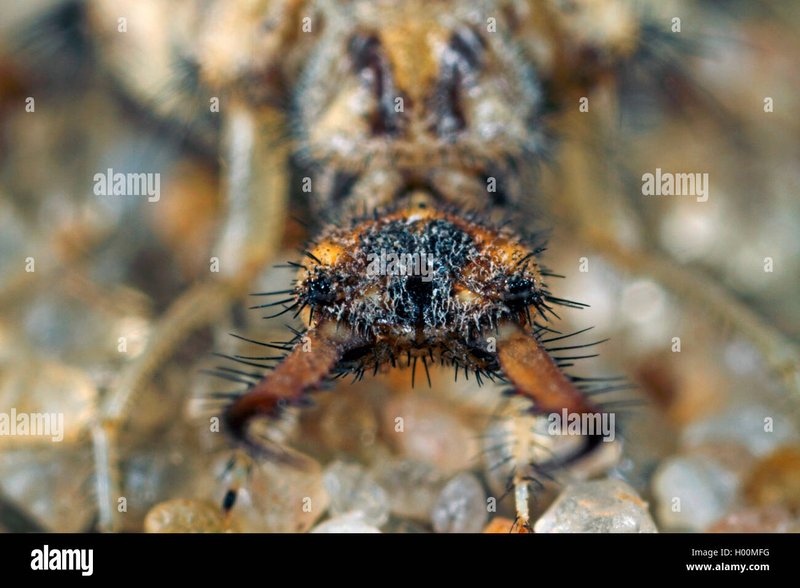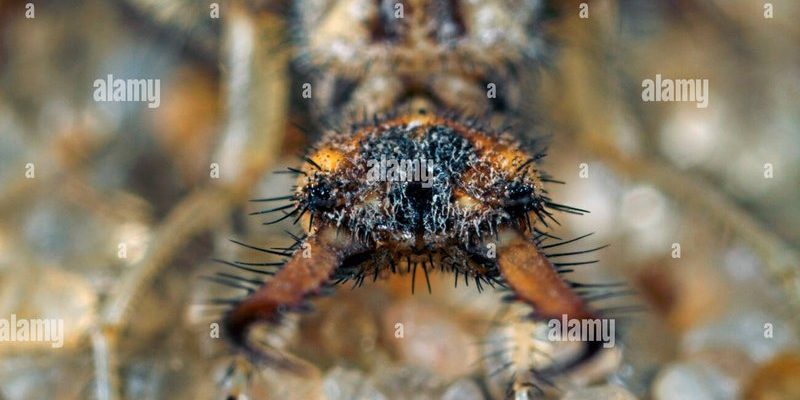
So, why document the behavior of ant lion larvae? The answer is simple: understanding these unique insects helps us appreciate the complex web of life they inhabit. Plus, it’s downright captivating to watch them in action! Let’s dive into the world of ant lion larvae and explore how field cameras can help us observe their fascinating behaviors without causing any disruption.
What Are Ant Lion Larvae?
Before we jump into the documenting process, it’s essential to understand what ant lion larvae actually are. Commonly found in sandy or loose soil, these larvae are the young stages of ant lions, which are a type of insect belonging to the order Neuroptera. Just imagine a tiny creature resembling a miniature alligator, complete with a fierce set of mandibles.
Ant lion larvae are expert ambush predators. They create conical pits in the sand and wait for ants or other unsuspecting insects to fall in. Once their prey tumbles down, the larvae quickly grab them and drag them to the bottom of the pit. It’s like a scene from a nature documentary right in your backyard!
One striking thing about these larvae is their transformation. They eventually pupate and emerge as adult ant lions, which look quite different—think delicate wings and a gentle demeanor. This life cycle offers a glimpse into nature’s wonders, showing how patience and strategy play a role in survival.
Choosing the Right Field Camera
Now that we’ve got a handle on ant lion larvae, it’s time to talk about field cameras. You might be wondering, “What camera is best for observing these insects?” Well, it really depends on your needs, but here are a few things to consider.
First, look for a camera with good resolution. You want to see those intricate details—like the way the larvae use their mandibles or how they dig their pits. Cameras like the GoPro Hero or Canon PowerShot are great options because they’re portable, waterproof, and can take high-quality photos and videos.
Next, consider battery life and storage capacity. You don’t want to run out of juice just when the action is heating up! Also, think about how you’ll secure the camera in the field. A stable tripod or a mount can help ensure your footage is clear and steady.
Lastly, check for features like motion detection and timelapse recording. These can be incredibly useful for capturing the behavior of ant lion larvae, as they often remain still for long stretches before springing into action.
Setting Up Your Camera
Once you’ve chosen a camera, setting it up for the best possible shots is the next step. Here’s how to do it effectively:
1. Select a Good Location: Find an area where you know ant lion larvae are present. Look for sandy soil and existing pit holes.
2. Positioning: Set the camera at an angle that captures the pit without being too intrusive. You want to observe naturally without scaring the larvae away. Often, a low angle works best.
3. Camouflage: To prevent the camera from scaring off the larvae, consider covering it with leaves or rocks that blend in with the environment. This way, you can capture authentic behavior without disruption.
4. Adjust Settings: Before leaving the camera for a prolonged period, double-check the settings. Make sure you have enough battery and storage for several hours or even days of recording.
Here’s the thing: patience is key. Leave the camera for an appropriate amount of time to catch the larvae in their element. You might be surprised by what you see!
Monitoring and Analyzing Footage
After setting up, you’ll probably be eager to check the footage. But what should you look for once you’ve got your precious videos? Here are a few things to observe:
– Hunting Techniques: Watch how the larvae use their pits to capture prey. Do they shake the sand to dislodge insects? Pay attention to the timing—how long do they stay still before striking?
– Interactions: Look for interactions with other insects. Do they share their territory or ward off competitors? Such behavior can be quite revealing about their ecosystem interactions.
– Environmental Factors: Note how weather or time of day affects their activity. For instance, are they more active in the morning or late afternoon?
By analyzing this footage, you can glean insights that have previously gone unnoticed. Plus, it’s a great way to learn about ecology and the interconnectedness of species.
Challenges and Troubleshooting
No tech setup is perfect, and you might run into some challenges while documenting ant lion larvae. Here are a few common issues and how to troubleshoot them:
– Battery Life: If your camera cuts out mid-session, consider bringing a spare battery or a power bank for longer recordings. It’s frustrating to miss those key moments!
– Storage Issues: Running out of storage can happen, especially if you’re filming in HD. Always check your storage capacity before you start and delete any old footage you don’t need.
– Camera Movement: If the camera moves or tilts, it can ruin footage. Ensure it is firmly secured to avoid any accidental shifts when the wind blows or animals pass by.
– Visibility: Sometimes, sunlight can create glare. For better visibility, try adjusting the angle or adding a filter if your camera allows it.
Here’s a tip: Keep a notebook or a digital log of your findings. Jot down notes on camera setups, conditions, and any unexpected surprises while recording. This can help refine your approach for future observations.
Sharing Your Findings
After your hard work, don’t keep those fascinating findings to yourself! Sharing your observations can be rewarding. Here’s how you can do it:
1. Social Media: Platforms like Instagram or TikTok are perfect for showcasing snippets of your footage. Use relevant hashtags to reach a broader audience interested in nature or entomology.
2. Nature Blogs and Forums: Consider writing a blog or contributing to online forums where enthusiasts gather. Sharing detailed observations and the story behind your documentation can inspire others.
3. Community Events: Look for local science fairs, wildlife expos, or community events focused on nature. Sharing your footage and findings can spark conversations and educate others about these incredible creatures.
By sharing, you contribute to the broader understanding of ant lion larvae and their habitats. Plus, connecting with others can lead to even more opportunities for exploration and learning.
Documenting the behavior of ant lion larvae with field cameras is an exciting endeavor that opens a window into a fascinating world. By choosing the right camera, setting it up thoughtfully, and analyzing your footage, you can uncover behaviors that highlight the beauty of these often-overlooked insects.
So grab your field camera, head out to your backyard or local park, and see what wonders await. Who knows? You might just discover a new passion for documenting nature. And remember, every little observation contributes to our understanding of these intricate ecosystems we share with creatures big and small. Happy filming!

